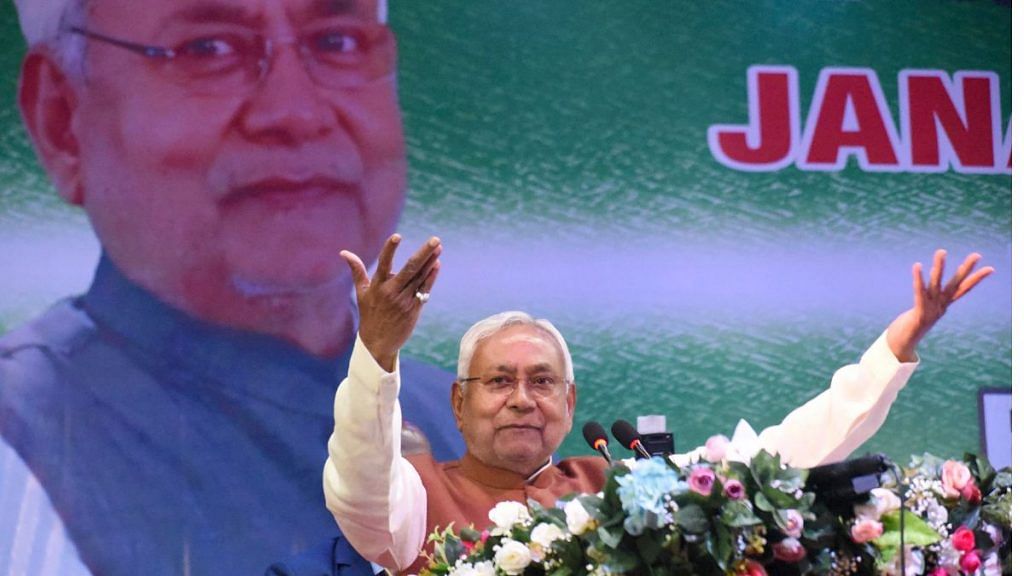Patna: The first phase of a caste-based census being conducted in Bihar began Saturday. The exercise, Chief Minister Nitish Kumar has said, will help the state gather the socio-economic status of every group. “Once the enumeration exercise is complete, we will send the findings to the Centre,” he told media persons.
“The BJP did not want a caste census. Prime Minister Narendra Modi rejected our demand”, said Deputy Chief Minister Tejashwi Yadav, stressing that the Rashtriya Janata Dal (RJD) has been demanding that such a survey be conducted for a long time.
When Nitish first came to power in 2005, he had often declared that he believed in the politics of jamaat (masses) and not jaat (caste). But over the years, his affiliation to caste politics has increased.
The change in his stance — from jamaat to jaat — is being explained by political observers as a result of his dipping political influence. The by-polls held in three seats last year — Kurhani, Gopalganj and Mokama — suggest that even his basic vote bank, consisting of EBCs, Kurmis and Kushwahas, have begun deserting him.
“The original hero of caste politics in Bihar is Lalu Prasad Yadav. Nitish Kumar never ignored caste, but he supplemented it with good governance. Unfortunately, his political returns have been dwindling. Therefore, the caste thrust is his attempt to revive the Mandal politics and slow down the BJP’s attempt to saffronise JD(U)’s vote bank,” said N.K. Choudhary, former professor at Patna University, to ThePrint.
The Bharatiya Janata Party (BJP), however, is doubtful Nitish’s caste thrust will work.
“How can Nitish take advantage [of caste] when every political party is supporting caste politics? During the Mandal politics phase, there was a force opposing it,” said BJP leader and former deputy CM Sushil Kumar Modi to ThePrint.
Adding that the leaders of the grand alliance in the state are distorting facts, Sushil Kumar Modi added: “The decision to have a caste survey was taken on 9 June in a cabinet meeting. The BJP was a part of the government then. We were part of the all-parties delegation that met the PM on the demand for a caste census. We would like to ask the CM why it has taken so long to do a caste census and why he has not held an all-party meet to give details about the methodology.”
Also read: Why Bihar CM Nitish’s latest yatra has BJP scoffing, JD(U) weary — ‘whole show is staged’
Nitish’s caste census, and its pitfalls
Politicians have pointed out that Nitish is seeking to do what Lalu did in the 2015 assembly polls — when he took a statement made by Rashtriya Swayamsevak Sangh chief Mohan Bhagwat calling for a ‘social review’ of reservation, and used it to create a caste divide between upper and backward castes. Nitish, they say, is attempting something similar with his caste politics.
In 2006, he had brought in 20 per cent reservation for the Extremely Backward Caste (EBC) in panchayats and local bodies. In 2009, he divided Dalits by creating a separate ‘Mahadalit’ group consisting of 21 sub-castes of Dalits.
Following the 2020 assembly polls in the state, Nitish had supported the call of RJD chief Lalu Prasad for a caste census by the central government and, in August 2021, headed an all-party delegation to meet PM Modi demanding a caste census. And, after ending the alliance with the BJP, he put caste survey on the forefront of his political agenda.
But the caste census is not without its problems.
Karnataka did a caste survey in 2015, but is yet to release the report. The reason, reportedly, being that the population of a dominant caste turned out to be much less than what was expected and neither the Congress nor the BJP are willing to release the report.
The caste census initiated by the Centre in 2011 saw as many as 46 lakh castes in India and could not be released due to errors.
The caste survey being carried out in Bihar is scheduled to be released in June when politicking for the 2024 Lok Sabha polls will have picked up significantly.
“It could lead to conflict in the OBC groups. For instance, if the population of one caste is revealed less than another group’s, they might start agitating that the caste survey has been doctored,” said a BJP leader, who wished to not be named, to ThePrint, recalling that in the mid-1990s, contradictions within the OBC blocks had started surfacing. “Nitish, has ventured into a path which can bring out more controversies than solutions.”
Also read: Nitish Kumar is riding a tiger with prohibition in Bihar. Everyone knows it’s failed
